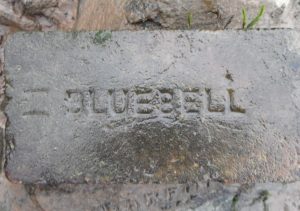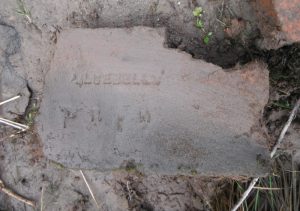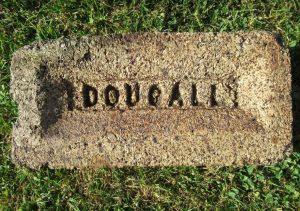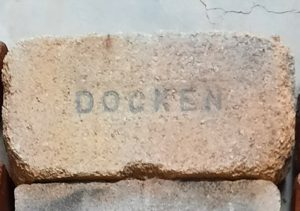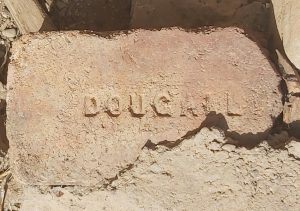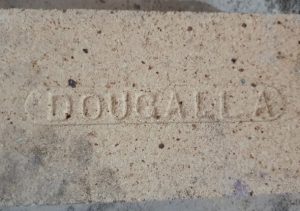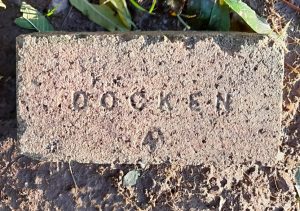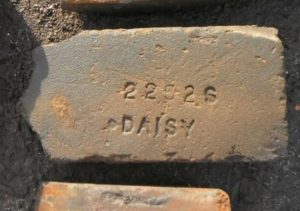James Dougall & Sons Ltd – Pamphlet no 3 – Sicardo Refractories
Preface – This pamphlet describes the silicon carbide refractories manufactured by James Dougall & Sons Ltd. under their trade name of SICARDO. This refractory product is supplied principally for use in industrial kilns, furnaces and boilers where, in certain positions, the unique properties of SICARDO can offer material advantages over all other types of refractories. Separate pamphlets, which are also available, describe the Dougall and Docken range of fireclay refractories, the Aludo range of high alumina refractories and the range of refractory cements, mouldables and castables, which are manufactured and supplied from the Company’s Works at Bonnybridge.
Properties of silicon carbide refractories:- Silicon carbide does not occur naturally but is a synthetic material with the chemical formula SiC. It is made by mixing together in an electric furnace sand, coke, salt and sawdust. As the temperature is raised the sawdust burns out forming a porous mass which allows any trapped gas to escape while the salt combines with impurities to form volatile compounds. At about 2200C. the sand and coke fuse and, on cooling slowly, silicon carbide crystals form. The pure crystals are white in colour, but commercially produced crystals vary from pale green to black with increasing impurity.
Silicon carbide has several commercial uses, for example, as an abrasive, as a heating element, and as a refractory. This pamphlet deals only with the use of silicon carbide for refractory purposes.
The special properties of silicon carbide as a refractory will very with the amount and type of additive used by the manufacturer for bonding and other purposes; however, the characteristics of silicon carbide are listed below.
Refractoriness – Silicon carbide does not melt but dissociates at a temperature of over 2200C. The refractory product may have a lower softening temperature dependent upon the additives used.
Hoy strength – Silicone carbide is extremely stable under load at high temperatures, though this property can be affected by the nature and the amount of additives used.
Thermal conductivity – The thermal conductivity of silicon carbide is very high being, in the best silicon carbide refractories, of the order of ten times that of a standard firebrick.
Spalling resistance – The very high thermal conductivity of silicon carbide and the low and uniform reversible thermal expansion result in silicon refractories having an extremely high resistance to cracking with sudden changes in temperature.
Abrasion – Silicon carbide refractories have a very high resistance to mechanical abrasion due to the inherent of the crystals.
Resistance to the slag attack – The resistance of silicon carbide refractories to most slags is very good. However, certain slags can attack silicon carbide at high temperatures. In many cases, this can be overcome by the use of air or water cooling to lower the temperature below that at which the slag attack occurs.
Oxidation of Silicon Carbide – The one limitation to the more universal use of silicon carbide as a refractory is its tendency to change its nature at elevated temperatures when the atmosphere is oxidising and particularly when the atmosphere contains steam. This change in nature is due to the oxidation of the silicon carbide to silica. Since the silica has a greater molecular weight and volume than silicon carbide, the oxidation is accompanied by an increase in weight and size and a loss of strength.
It can be seen that though the refractory properties of silicon carbide are for the most part excellent, the oxidation and attack by certain slags have until now prevented greater use being made of this refractory. The skill of the most experienced manufacturers of silicon carbide refractories has been applied to reducing these disadvantaged and, today silicon carbide can be used very successfully in oxidising atmospheres. In fact, most furnaces have oxidising atmospheres and it is significant that silicon carbide refractories can usually give very satisfactory service under such conditions.
Why Sicardo is a top grade Silicon Carbide refractory – SICARDO refractories contain over 95% of silicon carbide with only a very low percentage of additives. Many of the other silicon carbide refractories which are commercially available contain higher percentages of additives as bonding materials. Their object is usually to protect the silicon carbide crystals in order to defer oxidation but SICARDO has an exceptional resistance to oxidation without the addition of a high percentage of bonding material.
Due to the small amount of additives used, SICARDO has:
1 Stability under high temperature and load conditions without deformation.
2 Exceptional resistance to abrasion.
3 A nearly perfect resistance to attack from almost all types of slags at all temperatures except when these slags liberate excessive free oxygen during their formation.
4 A remarkably high thermal conductivity.
5 A maximum resistance to spalling.
The present high quality of SICARDO is due to many years of patient research and experiment and to the careful study of the results obtained in service. This study is a permanent part of the research program and improvements made in manufacturing methods are continually being assessed. For example, in one particular case where a life for SICARDO of two years was previously considered to be satisfactory, the improved methods of manufacture now promise a service life of from seven to eight years.
With the tendency towards increasingly severe conditions in most types of industrial furnaces, many new problems are arising. It is quite frequently found that SICARDO can be substituted profitably for other types of refractories where silicon carbide refractories have not previously been given consideration. In such connections, our technical service and past industrial experience are freely available.
In some cases, the high initial cost of SICARDO is given as a reason which debars its use, but it must be kept in mind that the life of a furnace frequently depends on the life of the weakest link. When used in appropriate conditions, the higher initial cost of SICARDO can be offset many times over due to longer life, increased payload or rate of throughput, improved quality of the product or reduced fuel consumption.
Technical data:
Chemical composition . . . . . . . . . . . . . . . . >95% SiC
Physical properties:
Apparent Porosity % . . . . . . . . . . . . . . . . . . 16
Bulk Density gm/cc . . . . . . . . . . . . . . . . . . 2.63
Specific Gravity . . . . . . . . . . . . . . . . . . . 3.13
Cold Crushing Strength lb./in. . . . . . . . . . . . . . . 10,000
Permanent Linear Change % 2 hrs. at 1410 C . . . . . . . . . . . Nil
Spalling index:
Room temp.-1000 C 10 min. intervals . . . . . . . . . . . . . 30
Thermal Conductivity BTU/hr./ft./in./F . . . . . . . . . . . . 100
Refractoriness under load:
Load 100 lb./in. , no subsidence at . . . . . . . . . . . . . . 1650 C.
Refractoriness . . . . . . . . . . . . . . . . . . >Cone 40
Reversible thermal expansion %:
Room temp.-1000 C. . . . . . . . . . . . . . . . . . . 0.43
Approximate data given is appropriate at January. 1961
SICARDO – The “SICARDO” Products of James Dougall & Sons, Ltd., are a genuine Silicon Carbide Product which, in most cases, contains no clay bond. The properties of Silicon Carbide as a super refractory are so remarkable that it must be considered to be one of the greatest of the known refractories.
“SICARDO” has the greatest resistance to most slags, the highest refractoriness under load, and the best spalling resistance and conductivity of all the Dougall range of products.
It is not only the rather high price which restricts the use of a refractory which combines all of these desirable products. Under certain conditions of temperature and atmosphere, the Sicardo product tends to oxidise and grow in volume.
Its range of successful uses, however, is very wide and capable of constant further expansion. In the Iron and Steel Trades, Sicardo has found useful application to resist slag attack and abrasion. In the Ceramic Trade it has also been successful in resisting exceptionally severe conditions of combined load and temperature change as kiln furniture in the tunnel kilns. In high conductivity has also proved its value for muffles. Many other cases of its successful application could be cited and our technical staff are always at your disposal to advise you whether it is worthy of a trial under your particular conditions.
Industrial applications:-
1. Ceramic industry – SICARDO is very widely used in the Ceramic Industry in the form of kiln furniture, especially as props and batts, for the structure on which the ware is fired. Here the excellent refractory properties of SICARDO allow heavy weights to be carried at high temperatures without warping or cracking while the high thermal conductivity allows uniform and rapid heating or ware particularly on unexposed faces. These properties are particularly valuable when firing sanitary ware and biscuit china, especially in the tunnel kiln.
In the photograph below SICARDO batts and props are being used in a Shelly “Top Hat” electrically-fired kiln. The batts are 1 ½” thick and each batt carries a load of 234 lbs. The SICARDO batts which have been longest in service under these conditions have now had 150 firings without any sign of growth or bending.

The strength of SICARDO considerably reduces the volume of kiln furniture required in comparison with standard refractories. This consequently gives a greater payload. The adequate resistance to oxidation gives SICARDO an extremely satisfactory life under practically all conditions. Use of SICARDO will cut down the rebuilding of kiln setting cars, and, with the greater loading capacity, will result in increased production at a lower cost.
2. Muffle furnaces – The high thermal conductivity of SICARDO reduces temperature gradients and allows temperatures to be attained more quickly. This makes SICARDO ideal for muffle furnaces. The SICARDO refractory conducts the temperature more quickly and effectively to the ware and ensures a better distribution of the heat. When there is under hearth firing, SICARDO hearths and supporting pillars prevent warping which could distort the ware. The high abrasion resistance of SICARDO hearths is also of advantage in some cases. the high heat conduction of SICARDO will give considerably fuel saving and increase the speed of production. Better quality ware can also be expected owing to the more uniform heat distribution which eliminates cold spots.
The photograph below illustrates a few of the many varied types of muffle bricks which are being manufactured in SICARDO.
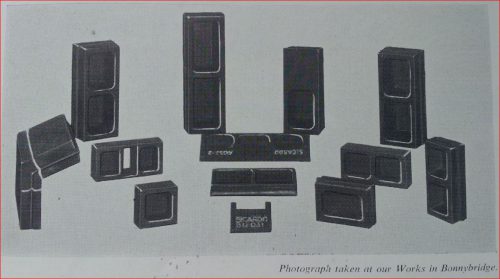
3. Water tube boilers – Due to its high abrasion resistance and non-wetting properties in contact with coal ash slags, SICARDO ids the ideal refractory for the lining of the lower portion of the sidewalls of stoker-fired boilers SICARDO is normally only required for the bottom 12” to 24” of the side walls from the grate level where the greatest abrasion and slag attack takes place. SICARDO is equally commended for solid walls or for walls protecting the water box or the tubes from the water box.
In the photograph below the tubes from the water box have been protected by a lining of SICARDO refractories specially shaped to fit the tubes behind. The photograph was taken during the normal survey after one year of operation.

It can be seen that the SICARDO refractories have been scarcely attacked by the severe abrasion and slag conditions and are ready for a second year of operation without any repair being required. The small amount of fused clinker adhering to some parts of the SICARDO wall had not attacked the SICARDO and can easily be removed by hand.
4. Other applications – It would be impossible to describe all the different applications of SICARDO, but a few other uses are mentioned briefly below :
Skid Bars – The use of SICARDO as skid bars and rails is becoming increasingly popular in the hearths of industrial furnaces. SICARDO is ideal for this purpose with its high mechanical abrasion resistance and strength at working temperatures. Freedom from slag pick up and, in certain cases, the elimination of scratching of the ware are further advantages of SICARDO skid bars. These are supplied in standard shapes or tapered special shapes according to customers’ preference.
SICARDO for Jointing and Monolithic Structures – When jointing is required, SICARDO refractories should always be bonded with the special cements supplied for the purpose. In certain cases, as for instance when a close contact heat transfer is required to water tube boiler tubes, a SICARDO monolithic structure may be preferable to SICARDO shapes, especially when the tubes have a number of studs which would make the fitting of special shapes difficult. A special SICARDO ramming mix can be supplied for such purposes. These special cements and mixes are dealt with more fully in a separate pamphlet.
Domestic Heat Storage Cookers – Refractory problems can occur even in domestic cookers of the solid fuel heat storage type. The main problem here is slag adhesion and this is completely eliminated by the use of SICARDO tiles. SICARDO also gives a uniform heat distribution through the cooker, which is an added advantage.
The photograph below shows SICARDO tiles being fitted into the firebox of a solid fuel heat storage Esse Cooker ar Messrs. Smith and Wellstood Limited.
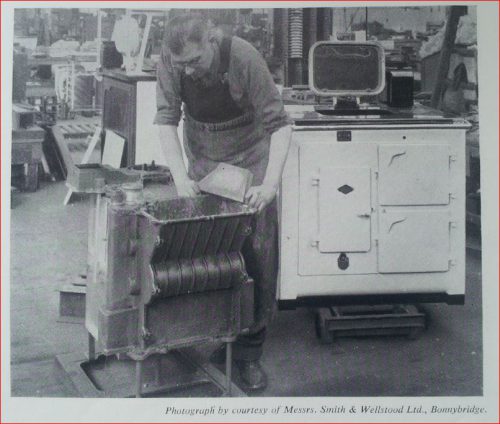
Methods of testing – Refractoriness: A test by Seger cone of the temperature at which the material commences to melt when heated at a standard rate in an oxidising atmosphere.
Refractoriness -under- Load: A test to determine the temperature at which the material commences to lose shape when heated at a standard rate under a definite load in an oxidising atmosphere. The usual standard load for this test is 2 kilograms per square centimetre (28.45 lbs. per square inch)
Permanent Linear Change: A standard temperature (usually 1410 C.) is taken and the brick sample is maintained at this temperature for 2 hours. The brick is measured before and after heating and the difference in size expressed as a percentage of after-contraction or after-expansion is the permanent linear change.
Apparent porosity: A test to ascertain the volume of air spaces which can be penetrated by a liquid. The result is expressed as a percentage of the total volume.
Cold Crushing Strength: A pressure test on a rectangular sample by which the weight is added at an agreed rate until the test piece fails. The load applied to the top face of the sample at the time of failure is expressed in lbs per square inch.
Other data: concerning silicon carbide refractories is sometimes asked for such as:
Reversible Thermal Expansion: Rate of expansion while the sample is being heated.
True Specific Gravity: Weight of the material in relation to the weight of water having a volume equal to the solid volume of the material.
Apparent Specific Gravity or Bulk Density: Weight of the material in relation to the weight of water having a volume equal to the volume of the material plus the volume of the sealed pores.
Spalling: The resistance of the material to cracking under rapid temperature fluctuations.
Slag Attack: The resistance of the material to the penetration of slag at high temperatures.
Permeability: The resistance of the material at normal temperatures to the penetration of gases.
Resistance to Oxidation: The sample is maintained at a pre-determined temperature in a steam saturated atmosphere for an agreed number of hours. The extent of oxidation which has occurred is assessed both by the increase in weight and by the increase in volume. For some of these tests, there is no standard method of testing and buyers should not make comparisons on manufacturers’ data without first ensuring that the same method of testing has been applied in each case.

Place your orders early – In order to meet customers’ demands with as little delay as possible, stocks are maintained in standard sizes 9” x 4 ½” x 3” and 9” x 4 ½” x 2 ½”. SICARDO is, however, used for such a wide range of applications and therefore, in so many different special shapes and sizes, that in most cases orders have to be specially manufactured. This can involve a delay up to seven or eight weeks for manufacturing time alone and even longer when complicated mould equipment is required.
Technical enquiries are always welcome – We enjoy an excellent reputation for our ability to produce a wide range of intricate shapes in our SICARDO Quality. A well-equipped research laboratory is maintained at Bonnybridge to assist customers with technical problems and our suggestions regarding designs of shaped can
The sales department gladly advises on transport problems – Both for home and export orders problems can arise as to the best method of packing or routing. Suggestions can sometimes be made from the background of the Company’s experience which can reduce transport costs or eliminate damage in transit. Owing to its high cost, SICARDO is given special care and attention when being despatched and is normally packed in crates to avoid damage.
Shipments – Shipments can be most cheaply effected from Glasgow, Leith and Grangemouth, the company’s works being situated within easy reach of these three ports.
Home deliveries – Purchases made in minimum quantities of 6 tons avoid charges for extra carriage, but since SICARDO Quality is often required in smaller loads, every effort is made by the Company to deliver by the cheapest and speediest possible method.









